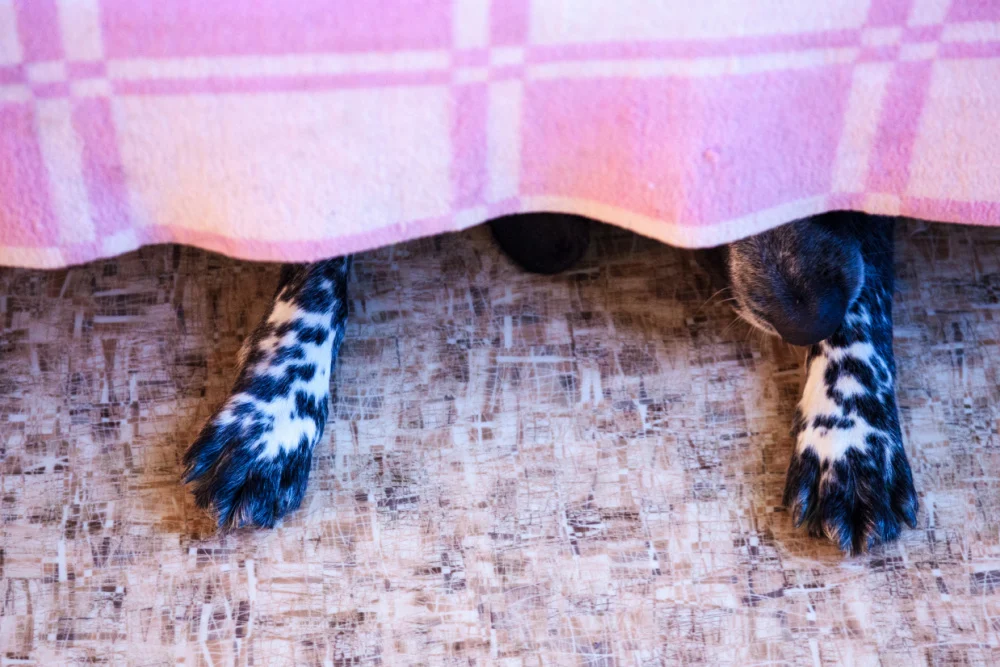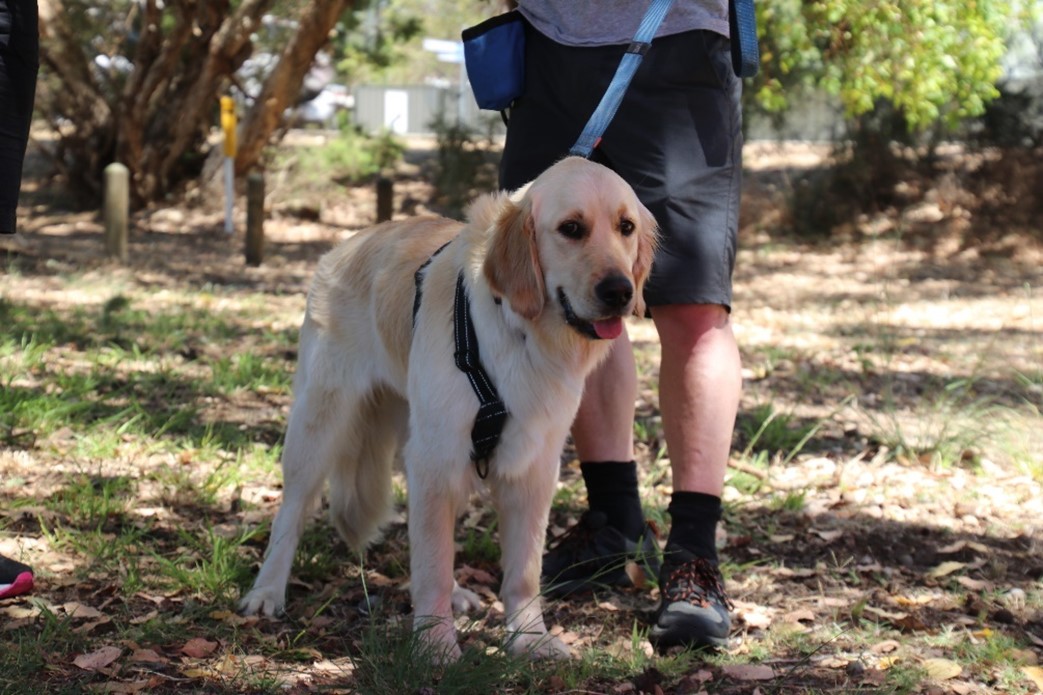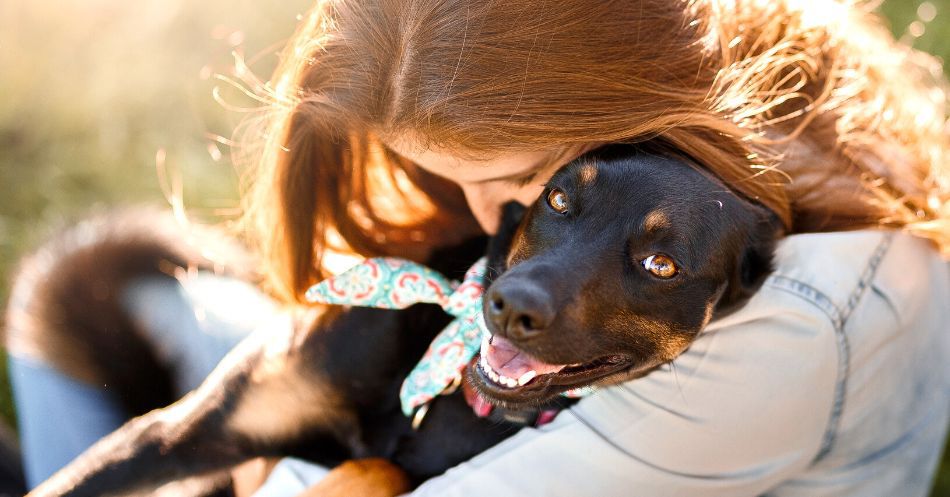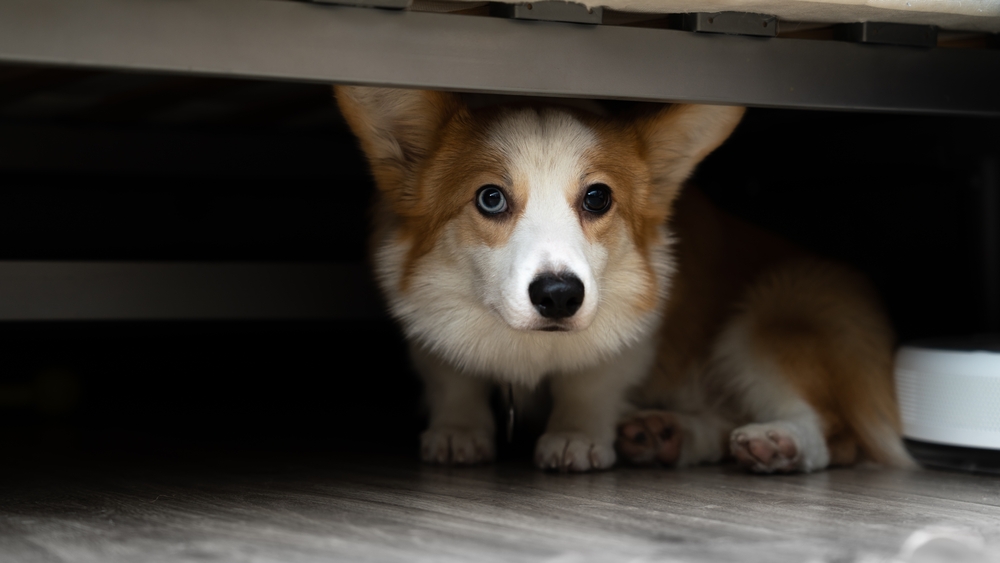I’ve noticed my dog slipping under the bed and staying there for hours and I can’t help but wonder what’s really going on. It’s easy to worry when our furry friends start acting in ways we don’t expect especially when they suddenly seek out dark quiet spaces. I know I’m not alone—lots of dog owners see this behavior and want answers fast.
Curiosity and concern always push me to dig deeper. Is my dog scared sick or just craving a bit of alone time? Understanding why dogs hide under the bed can help me respond with care and keep my pup happy and healthy. Let’s take a closer look at what could be behind this mysterious habit.
Common Reasons Why Dogs Hide Under the Bed

Common-Reasons-Why-Dogs-Hide-Under-the-Bed
Dogs often retreat under beds for reasons ranging from emotional responses to physical needs. I’ve outlined the most frequent causes to help clarify this behavior.
Fear and Anxiety Triggers
Dogs hide under beds to escape triggers that provoke anxiety. Loud noises cause many dogs to seek small spaces—examples include fireworks, thunderstorms, or construction nearby. Visitors can also overwhelm dogs unfamiliar with new people or scents. Changes in routine like moving furniture or introducing new pets lead to uncertainty, pushing dogs to shelter in quiet areas.
| Common Noise Triggers | Home Example |
|---|---|
| Fireworks, thunderstorms | July 4th, storms |
| Construction, appliances | Renovations |
| Shouting, loud TV | Parties, gatherings |
Seeking Comfort and Security
Dogs instinctively seek out small, enclosed spots like under beds to feel secure. Dark spaces block out stimuli and provide insulation from household activity. When the environment becomes too stimulating—examples include children playing or multiple adults moving around—dogs use these safe nests to decompress. Several breeds with a denning instinct—such as Dachshunds or Terriers—show this behavior more frequently.
| Comfort Source | Behavior Example |
|---|---|
| Dark, enclosed space | Curling up under bed in daytime |
| Soft bedding | Bringing toys or blankets with them |
Health and Medical Issues
Sudden hiding often signals health concerns. Dogs experiencing pain or discomfort isolate themselves to avoid interaction and noise. Illnesses causing lethargy or digestive upset—examples include gastrointestinal distress or joint soreness—prompt dogs to seek the most undisturbed spot. If I see this behavior increase along with appetite loss or mobility issues, it may indicate a medical condition.
| Health Symptom | Hiding Behavior Noted |
|---|---|
| Limping, difficulty moving | Extended time under bed |
| Vomiting or diarrhea | Avoidance of usual spots |
| Appetite loss | Less interaction, more hiding |
These vectors—fear, comfort, and health—intertwine with a dog’s natural instincts and environment. If my dog’s tendency to hide increases or aligns with physical symptoms, I monitor closely and consult a licensed veterinarian.
Behavioral Patterns to Observe

Behavioral-Patterns-to-Observe
I notice several behavioral patterns when my dog hides under the bed. These patterns often point to comfort-seeking, stress responses, or environmental changes in my home. Below, I examine key triggers and how shifts in daily life or household settings influence this behavior.
Changes in Daily Routine
My dog’s hiding behavior sometimes connects directly to changes in our routine. Major adjustments like a new work schedule, different feeding times, or unexpected absences cause increased retreat under the bed. For example, after adjusting my morning routine or having guests stay over, I see my dog hiding more frequently.
| Change in Routine | Example | Common Dog Response |
|---|---|---|
| Altered schedule | New work hours | Increased hiding, restlessness |
| Introduction of new people | Guests, babysitters | Withdrawal, seeking den spaces |
| Changes to environment | Furniture moving, remodel | Hiding under bed, avoidance |
These data points highlight how sensitive my dog becomes to household rhythms, especially if disruptions occur abruptly. If hiding starts suddenly or is paired with other symptoms like poor appetite, the behavior may signal distress rather than routine comfort-seeking.
Response to Household Changes
Household changes, including environment shifts or new household members, often trigger hiding under the bed. Whenever I rearrange furniture or host parties, my dog seeks refuge in quiet, enclosed spaces. This pattern supports studies noting that many dogs use den-like spots when overwhelmed.
| Source of Change | Specific Example | Typical Dog Behavior |
|---|---|---|
| Environment disruption | Loud noises, moving items | Retreating to bed or closet |
| New household members | Babies, pets, temporary guests | Shyness, hiding, reduced interaction |
| Increased commotion | Parties, remodeling | Hiding longer periods, alert body posture |
If my dog begins hiding more after these changes, I monitor for other signs like aggression or lethargy. Consistent hiding after environmental disruptions often means my dog feels insecure or overstimulated.
By tracking these behavioral patterns against routine and household changes, I identify triggers and the best ways to support my dog’s comfort and well-being.
How to Help Your Dog Feel Safe

How-to-Help-Your-Dog-Feel-Safe
I notice my dog relaxes more when I make small changes that support a sense of security. Direct adjustments in the environment, routine and response help reduce hiding under the bed.
Creating a Safe Environment
I create a calm area by lowering noise, dimming lights, and speaking softly. Calming music or white noise machines block frightening sounds like thunder or fireworks. I always let my dog access cozy hides, such as crates or corners with blankets and familiar toys.
I minimize exposure to stressors. When I know loud events or visitors are coming, I keep my dog in a quiet room and use treats or favorite play items to reinforce positive feelings. Gradual desensitization with treats and rewards helps my dog build confidence around mild triggers.
Safe Space Features Table
| Feature | Description | Benefit |
|---|---|---|
| Cozy crate/corner | Enclosed with blankets, toys | Mimics den comfort, security |
| Calming sound source | White noise or music | Drowns out scary noises |
| Soft lighting | Low-watt bulbs or natural light | Reduces overstimulation |
| Access to owner | Easy exit to find me | Builds trust, reassurance |
When to Seek Professional Help
If I see my dog hiding under the bed frequently or with new symptoms like loss of appetite or lethargy, I contact a veterinarian to rule out illness or injury. For persistent fear or anxiety that lessens my dog’s quality of life, I consult a certified dog behaviorist or trainer. Experts evaluate the situation, provide tailored behavior plans, and in serious cases may recommend anxiety medication.
| Symptom | Possible Cause | Professional to Contact |
|---|---|---|
| Persistent hiding | Anxiety, pain, fear | Vet, behaviorist |
| Appetite changes | Illness, stress | Vet |
| Lethargy | Medical issue | Vet |
| Aggressive outbursts | Extreme stress | Behaviorist, trainer |
| Failure to improve | Deep-rooted anxiety | Behaviorist, vet |
Conclusion
Watching my dog hide under the bed can be unsettling but I’ve learned that understanding the reasons behind this behavior is key to supporting my pet’s well-being. Every dog is unique and their need for comfort or solitude can shift with changes in their environment or routine.
By staying attentive to my dog’s patterns and making small adjustments at home I can help create a space where they feel safe and secure. If hiding becomes more frequent or is paired with other symptoms I’m always ready to seek professional advice to ensure my dog’s health and happiness.
Frequently Asked Questions
Why does my dog hide under the bed?
Dogs often hide under beds to seek comfort, security, or alone time. This behavior can be a reaction to fear, anxiety, loud noises, changes in routine, unfamiliar guests, or even health issues. Monitoring patterns can help determine the cause.
Should I be concerned if my dog suddenly starts hiding more often?
Sudden, increased hiding may indicate your dog is stressed, anxious, or experiencing pain or illness. If this behavior is frequent or comes with other symptoms like lethargy or loss of appetite, consult your veterinarian.
What common triggers cause dogs to hide under beds?
Loud noises (like fireworks or thunderstorms), household changes, guests, new routines, and overstimulation can prompt dogs to seek shelter under beds. Health problems can also cause them to isolate themselves.
How can I help my dog feel safe and comfortable?
Create a calming environment by lowering noise, dimming lights, and offering cozy, accessible hiding spaces. Use calming music, white noise, and positive reinforcement (like treats) to ease stress during overwhelming situations.
When should I seek professional help for my dog’s hiding behavior?
If your dog’s hiding is frequent, sudden, or accompanied by other concerning symptoms (such as changes in appetite, vomiting, or lethargy), contact your veterinarian or a certified dog behaviorist for guidance.

